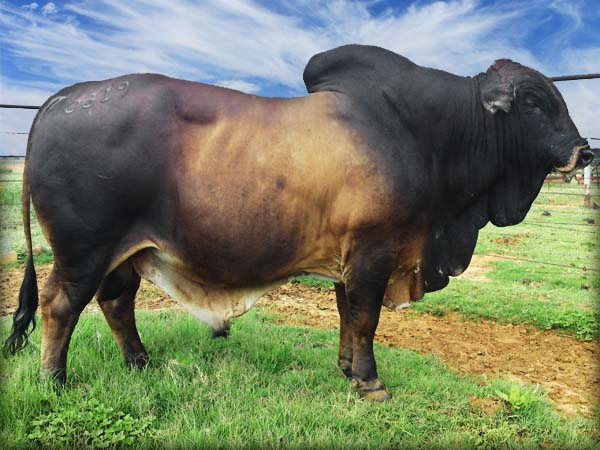The following feature is by Dr. Mary Muchunguh, a livestock expert.
Castration is a practice that farmers have used over the years to manage their herds. It involves the complete removal or destruction of the testicles. A castrated bull is called a steer.
The first and most common reason why farmers undertake castration is for breed selection. This is primarily driven by the farmer’s need to select bulls with superior traits and keep them for breeding purposes while making sure that those with inferior traits do not get a chance to pass on their genes.
Often farmers look out for superior production traits in animals such as high milk and meat production in the case of cattle production.
Farmers seek out these traits so as to ensure they maintain superior traits in their herd and to sustain a desirable calf crop. Castration of bulls also contributes towards regulating the genetic quality of the herd by ensuring inbreeding is kept at bay, through castration of closely related animals.
There are numerous benefits that have been documented that are associated with the management practice of castration. These include improved beef quality.
Often, beef from steers has a better flavour and is more consistently marbled and tender. Castration of beef cattle also reduces the number of “dark cutters” due to the high muscle pH evidenced.
“Dark cutting” is a term that is often used to describe beef that is darker in colour than normal (characteristic bright cherry-red colour). The darker colouration is unappealing and shunned by the more keen consumers, often fetching a lower market price.
Steer carcasses are known to fetch good market prices and thus are preferred by many beef producers.
In addition, steers tend to be docile and exhibit less aggressive temperament due to the reduced testosterone levels. Historically, they were the choice draught animals as it was easier to handle them as compared to bulls. Due to their docility, it is easier to manage the herd in the grazing fields or feedlots. It has also been documented that steers have a higher growth rate due to better feed efficiency as opposed to bulls.
BEST AGE
There are variations as to when a farmer should carry out this management practice. Some farmers prefer early castration. The procedure is carried out at birth or at three to six months of age.
Most farmers prefer this age group as the calf heals faster and suffers less stress from the procedure than a mature bull. The earlier, the better.
Indeed there are increased risks associated with castrating an older animals including; increased bleeding, infections and pain. The older animal suffers more stress and its recovery is much slower than the younger calf. There are also decreased liveweight gains in animals castrated at an older age as opposed to the younger calves.
The greatest disadvantage of early castration, however, is the loss of potential breeding stock given that the observable traits of the particular calf are not fully developed or been exhibited.
The farmer can only depend on performance records of its parents, if available, to make the decision. However, it is recommended that the best time to castrate an animal is before it reaches puberty.
CHOICE OF METHODS
Once the farmer makes the decision to castrate his bulls, there are various methods to choose from to undertake this procedure.
Castration can either be done by stopping the blood flow to the testicles or surgically removing the testicles. The tool of choice is dependent on the livestock keepers’ preferences.
Castration is a delicate procedure that requires the services of a trained veterinarian or animal health extension officer. However, a well-trained farmer can also carry out the procedure.
The first method (elastration) involves the placing of a tight rubber band at the neck of the scrotum thus cutting the blood supply to the testicles, followed by necrosis and eventual fall off of the scrotum and testicles.
The completion of the above described process takes approximately 6 weeks but can be longer in older bulls. The advantages of this method include; technical ease and lowered risk to infections.
However, the disadvantages include missed testicles, the band may break and thus procedure is incomplete and considerable pain experienced by the animal.
The other method is the use of burdizzo clamps. This is a fairly common method in Kenya. The burdizzo clamps are used to crush the blood vessels to the testicles. This procedure is more difficult as it requires the animals to be well restrained, but is a much faster process. Its disadvantages include incomplete processes that may result in stags.
The surgical process is the surest way of castration. The testicles are surgically removed and thus sterility is assured. However, there is an increased risk of infections, bleeding and possibility of death is higher than the other methods. It is important that this procedure be undertaken in sterile conditions and by skilled personnel.
It is important to highlight that one of the freedoms of animals, is the freedom from pain. It is paramount that as a livestock keeper, you ensure that these procedures are made as painless as possible.
Animal welfare is as important as human rights. The administration of local, short-lasting anesthetic and other pain relief medication is recommended. As livestock keepers, we must put the animal welfare issues as a priority so as to reap the best from our animals.
After any of these operations is undertaken, it is important as a good farmer to:
- Provide a good clean and dry environment especially for the castrated calves
- Provide adequate feed and water where necessary
- Regularly inspect the wounds for swellings and signs of infection
- Regularly clean the wound with the prescribed medications
- Promptly seek the veterinarian’s advice upon detection of any abnormal behaviour or gait.








